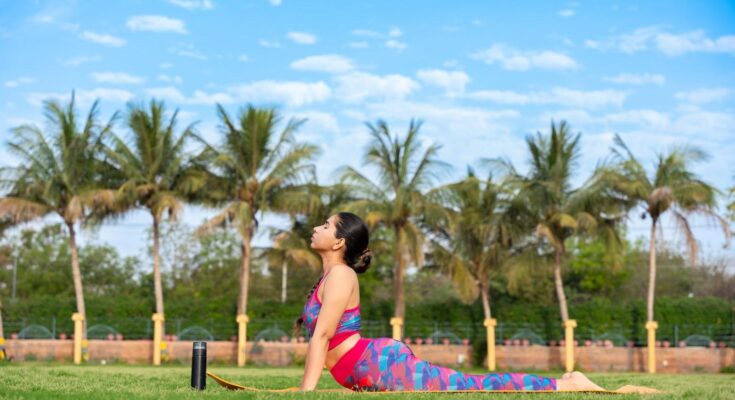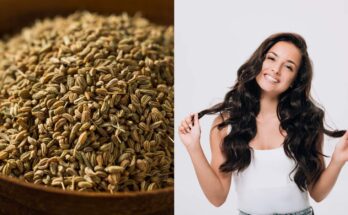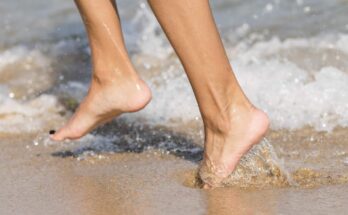Check out the benefits of bhujangasana for digestion. This gentle yoga pose can soothe your gut and promote overall digestive wellness.
Tired of reaching out for the bottle of antacid for digestive problems? Besides a good diet, the right exercise can help you prevent the feeling of being bloated. However, I am not someone who likes to sweat it out at the gym, and, when I faced a similar problem recently, my mom suggested yoga. One yoga pose in particular – bhujangasana or the cobra pose, comes with many gut health benefits. The pose involves a gentle backbend that stretches the abdominal organs, stimulating them and improving their overall function. Such stimulation can help alleviate issues like constipation and indigestion. Additionally, the cobra pose helps strengthen the core muscles, which are essential for supporting the digestive system. Check out the various benefits of bhujangasana for digestion and how to do it.
What is bhujangasana?
Bhujangasana, also known as the cobra pose, is a yoga posture that resembles a cobra with its hood raised. “You start by lying on your stomach with your legs extended and palms flat on the floor under your shoulders. As you inhale, you press into your hands and slowly lift your chest off the floor, arching your back,” says yoga expert Saurabh Bothra. There are many benefits of doing the bhujangasana for digestion as well as over all development.

Bhujangasana for digestion: How is it beneficial?
Bhujangasana, or the cobra pose, offers a wealth of benefits for your digestive system. Here’s how it works:
1. Stimulates abdominal organs
It is beneficial to do bhujangasana for digestion, as it helps in the stimulation of abdominal organs, as found in a study published in the International Journal of Multidisciplinary Research. This gentle backbend stretches and compresses the abdominal region, directly impacting vital digestive organs like the stomach, liver, and intestines. This action increases blood flow to these areas, essentially providing a gentle massage that can significantly improve their functioning and contribute to better overall digestion.
2. Relieves constipation
It is a good idea to do bhujangasana for digestion as well as to relieve constipation. The stretching of the abdomen and stimulation of the intestines during bhujangasana can help alleviate constipation by encouraging bowel movements and promoting regularity, as found in a study published in the International Journal of Ayurveda and Pharma Research. This movement helps to get things moving and contributes to a more balanced and healthy digestive process.
3. Reduces indigestion
Be it bloating or feeling overly full, there are many benefits of doing Bhujangasana for digestion. It helps to improve the overall functionality of the digestive system. This pose helps to ease the discomfort often experienced after meals, promoting a smoother digestive process, as found in a study published in the Journal of Ayurveda and Integrative Medicine. It stretches and stimulates the abdominal organs, and leads to improved digestion. This also means better nutrient absorption, ensuring your body gets the most from your food. This, in turn, contributes to overall gut health and well-being.

4. Strengthens core muscles
It is helpful to do Bhujangasana for digestion as it strengthens the core muscles, which are essential for a healthy digestive system, as found in a study published in the International Journal of Yoga. These strong core muscles play a vital role in supporting the abdominal organs, contributing to their optimal function. A strong core also helps maintain proper posture and alignment, which can further aid in digestion by preventing compression of the digestive tract. Improved posture allows for better expansion and contraction of the abdominal area during breathing, facilitating healthy digestive processes. This support from a strengthened core can alleviate pressure on the digestive organs and promote efficient movement of food through the system.
5. Keeps stress at bay
You will be amazed to know that bhujangasana is not only beneficial for digestion but is also linked to stress reduction, which plays a significant role in digestive health. “Stress can significantly impact digestion, often leading to issues like indigestion and irritable bowel syndrome,” says the expert. Cobra pose is known for its calming effect on both the mind and body, helping to reduce overall stress levels. By promoting relaxation, cobra pose indirectly improves digestion by creating a more conducive environment for optimal digestive function. When the body is less stressed, the digestive system can operate more efficiently. This relaxed state allows for better absorption of nutrients and smoother movement of food through the digestive tract.
How to do the cobra pose or bhujangasana?
Here’s a step-by-step guide on how to follow the cobra pose or bhujangasana for digestion benefits.
- Lie face down on your yoga mat with your legs extended behind you, feet hip-width apart or slightly wider. Place your palms flat on the mat directly under your shoulders, fingers pointing forward. Keep your elbows close to your body.
- Gently press your pubic bone and the tops of your feet into the mat. This creates a stable foundation for the pose. Engage your core muscles by drawing your navel slightly towards your spine.
- As you inhale, begin to press into your hands, lifting your chest and head off the mat. Imagine lengthening your spine as you rise, as if you’re peeling your chest away from the floor, vertebra by vertebra.
- Keep your elbows close to your body. For beginners, a low cobra (with forearms on the mat, elbows directly under shoulders) is a great starting point. As your flexibility improves, you can gradually straighten your arms further, but avoid locking your elbows. The height of your lift depends on your body’s capabilities. Listen to your body and never force the pose. The focus is on a gentle backbend, not how high you can lift.

- Keep your shoulders relaxed and away from your ears. Imagine lengthening your neck and avoid hunching your shoulders. Your gaze can be straight ahead, slightly upward, or even slightly back (but avoid straining your neck). The back of your neck should feel long and open.
- Use your back muscles to lift, rather than relying solely on your arms. This will help protect your lower back. Imagine drawing your shoulder blades together slightly.
- Hold the pose for a few breaths, feeling the stretch in your chest, abdomen, and the front of your thighs. Breathe deeply and evenly, allowing the pose to deepen with each exhale (if comfortable).
- To come out of the pose, exhale and slowly lower your chest and forehead back down to the mat. Rest your forehead on the mat and allow your body to relax completely.
- You can rest in Child’s Pose (Balasana) for a few breaths after completing bhujangasana. You can repeat the pose 2-3 times, allowing for rest in between each repetition.
Note: While it is a good idea to do Bhujangasana for digestion, if you have any back injuries or other health concerns, consult with a qualified yoga instructor or healthcare professional before attempting this pose. They can offer modifications to suit your needs.
Related FAQs
How often should I do bhujangasana for digestion?
It’s generally recommended to practice bhujangasana 2-3 times a week for optimal benefits. However, listen to your body and adjust the frequency as needed. Consistency is key.
When is the best time to do bhujangasana for digestion?
You can practice bhujangasana anytime, but it’s often recommended to do it in the morning or evening on an empty or light stomach. Avoid practicing it immediately after a heavy meal.
Get latest updates on health and wellness along with Mom Says
Source link






